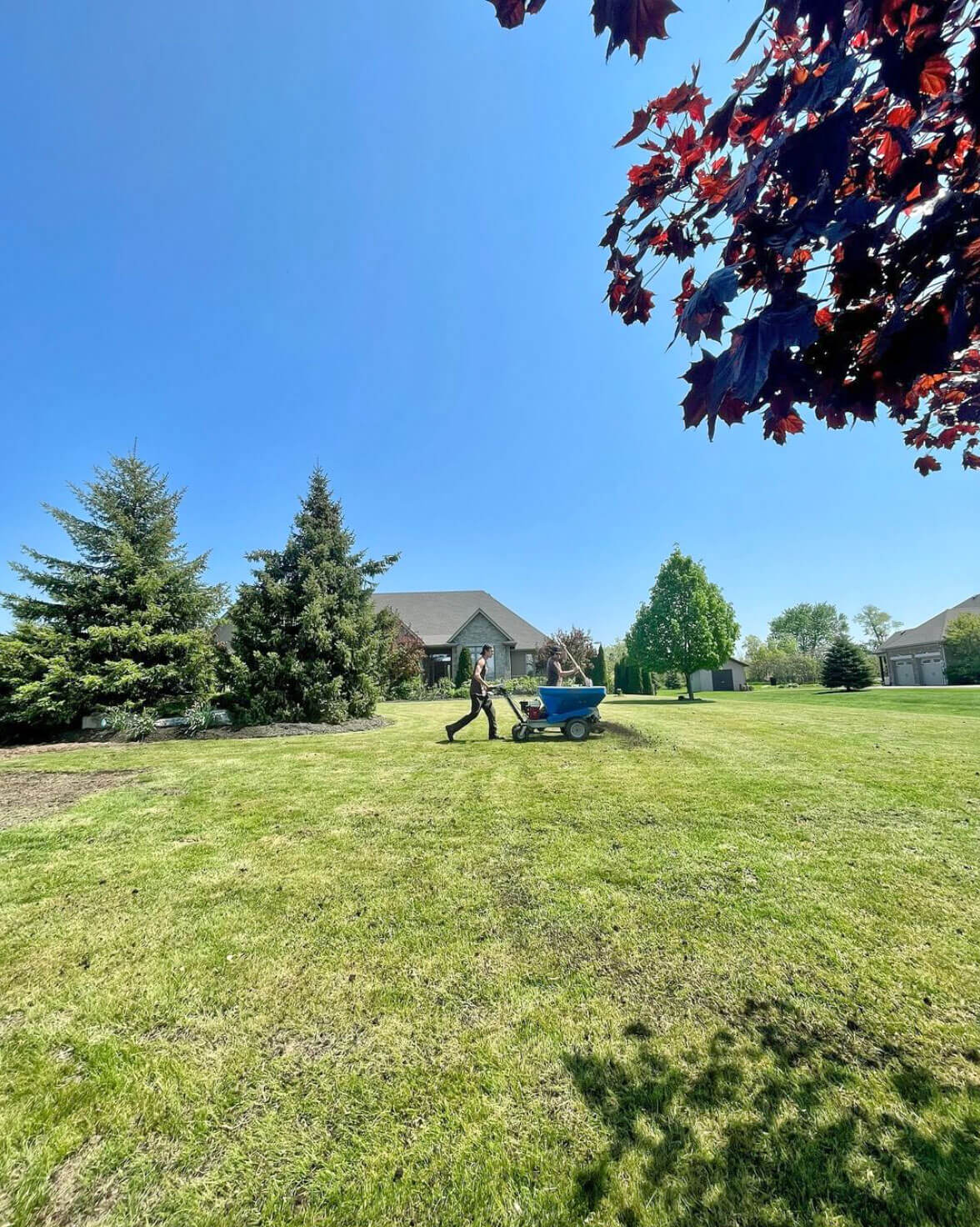Lawn Improvement
Home / Our Services /
Our multifaceted approach can transform your lawn to achieve the ultimate goal of a beautiful, healthy lawn.
Customized
Lawn Improvement
At Outscape Group, we understand that every lawn is unique, with individual needs and challenges. That’s why we don’t offer one-size-fits-all solutions. Instead, we tailor our lawn care packages to your specific property, taking into account factors like soil type, sunlight exposure, existing vegetation, and your desired outcome.
Our team will assess your lawn, identify any problem areas, and recommend a customized plan that includes the right combination of fertilizers, weed control, pest management, and other treatments to promote a healthy, lush, and vibrant lawn. Contact us for a quote tailored to your lawn’s unique needs.
Fertilizer
Fertilizer plays a crucial role in the growth and maintenance of a lush, green, and attractive turf. The use of fertilizer ensures that the lawn receives the necessary nutrients it needs to thrive. A well-fertilized lawn is more resistant to pests, diseases, and harsh weather.
Our team of experienced landscapers are skilled in assessing the condition of a lawn and determining the best fertilizer to use to achieve optimal results. We consider factors such as the type of grass, the soil conditions, and the climate to ensure that the lawn receives the right balance of nutrients.
Top Dressing/Overseeding
Top dressing, often referred to as overseeding, refers to a technique for reviving thin, sparse lawns. Spreading a thin layer of soil over the current grass creates a new bed for grass seed. This layer of soil creates an ideal environment for seed germination and growth. Grass seed is then liberally applied to the area, with the specific type of seed chosen based on the climate, soil conditions, and desired grass qualities.
To ensure optimal germination, the newly seeded lawn should be watered regularly, typically every day or two, depending on moisture levels. Top dressing is commonly performed during the spring or fall when temperatures are moderate, providing the best conditions for seed establishment and root development.
Top dressing effectively thickens the lawn, improving its overall health, appearance, and resilience.
Slit Seeding
Slit seeding is a technique that uses a machine similar to a dethatcher to insert grass seed directly into the soil, as an alternative to top dressing. This method offers a distinct advantage by ensuring the seed comes into direct contact with the soil, significantly boosting germination rates compared to top dressing. The benefits of slit seeding are numerous, as it allows for a more efficient and effective seed placement, resulting in a lush, vibrant lawn.
This method is particularly effective when the existing turf is in good condition, providing a healthy foundation for the new grass to thrive.
We recommend incorporating slit seeding into your yearly lawn care routine, ideally in conjunction with aeration, to promote a thriving lawn. Both slit seeding and top dressing are natural, chemical-free methods that encourage healthy growth, making them ideal choices for environmentally conscious gardeners seeking a lush, vibrant lawn.
Aeration
Core aeration is an important lawn maintenance technique that has various advantages for turf health and quality. By using a specialized machine to create holes approximately 1.5-3 inches deep in the lawn, core aeration removes soil plugs and leaves them on the lawn. This process is highly beneficial for lawns. The channels created allow water and nutrients to penetrate deeper into the root zone. Deeper roots enhance the turf’s drought tolerance and overall resilience. Any compacted soil is broken up, allowing better root penetration and air circulation.
Aeration improves water drainage by creating channels that allow excess water to escape from the soil. This prevents waterlogging, which can lead to root rot and other lawn problems. Additionally, the holes created during aeration allow water to infiltrate the soil more easily, promoting deeper root growth and increased water uptake.
Rolling
Rolling is an essential maintenance practice for lawns and sports fields, particularly in regions prone to frost. Frost bumps, caused by the expansion of water in the soil as it freezes, can create uneven surfaces and pose safety hazards for users. Rolling helps to smooth out these bumps by applying pressure to the soil, compressing it and creating a more level surface.
Rolling also improves drainage, reduces soil compaction, and promotes healthy root growth, all of which benefit the lawn’s overall health and longevity. By investing in regular rolling, property owners can maintain a pristine lawn that not only enhances its aesthetic appeal but also ensures the safety and enjoyment of those who use it.
Maintaining a smooth surface is especially important on sports fields, where divots caused by cleats or other equipment can quickly turn into dangerous holes. By rolling the field regularly, these divots can be filled in and the surface kept smooth, reducing the risk of injuries to players.

